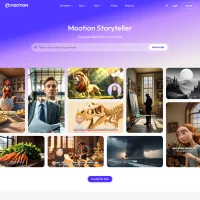Stay Ahead of the Curve
Latest AI news, expert analysis, bold opinions, and key trends — delivered to your inbox.
Microsoft-affiliated research finds flaws in GPT-4: What to keep in mind when using large language models
6 min read Microsoft-affiliated researchers discover flaws in GPT-4, the latest language model from OpenAI.GPT-4 shows an increased risk of toxic & biased content generation compared to its predecessor, GPT-3.5. It's also more susceptible to "jailbreaking" prompts. October 18, 2023 06:21
Microsoft-affiliated research has found flaws in GPT-4, a large language model developed by OpenAI. The researchers found that GPT-4 is more likely to generate toxic and biased text than GPT-3.5, its predecessor. They also found that GPT-4 is more vulnerable to "jailbreaking" prompts, which are designed to bypass the model's safety measures.
These findings are concerning, but they are not surprising. Large language models are trained on massive datasets of text and code, and these datasets can contain biases and toxic content. As a result, large language models are always at risk of generating biased and toxic text.
However, the researchers also found that GPT-4 is more capable than GPT-3.5 of generating creative and informative text. This suggests that GPT-4 has the potential to be a powerful tool for a variety of tasks, such as writing, translation, and code generation.
It is important to note that GPT-4 is still under development, and OpenAI is working to address the flaws that have been identified. The company has also released a number of tools to help users mitigate the risks of using GPT-4, such as a toxicity filter and a bias detection tool.
Overall, the research on GPT-4 is a reminder that large language models are powerful tools, but they must be used with caution. Users should be aware of the potential for bias and toxicity, and they should take steps to mitigate these risks.
Here are some things to keep in mind when using large language models:
- Be aware of the potential for bias and toxicity. Large language models are trained on massive datasets of text and code, and these datasets can contain biases and toxic content. As a result, large language models are always at risk of generating biased and toxic text.
- Use the model's built-in safety features. Most large language models have a number of built-in safety features, such as toxicity filters and bias detection tools. Use these features to mitigate the risks of using the model.
- Be mindful of your prompts. The prompts that you give to the model can have a big impact on the output that it produces. Be mindful of the potential biases in your prompts, and avoid giving the model prompts that could lead to it generating harmful or offensive content.
- Review the output of the model carefully. Once the model has generated text, review it carefully to make sure that it is accurate, unbiased, and non-toxic.
If you are using a large language model for commercial purposes, you should also consider the following:
- Get consent from your users before using the model to generate text for them.
- Be transparent about the fact that you are using the model.
- Allow your users to opt out of having their text generated by the model.
- Take responsibility for the text that the model generates.
By following these tips, you can help to ensure that you are using large language models safely and responsibly.



















 AI Agents
AI Agents